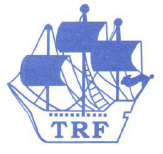Join Now | Free Trial | Login | Membership
Back to listing
Back to listing
18 Jan 2024
Sources:
Lima, Peru
Last Saturday, January 12, the second fishing season of 2023 for Peruvian anchovy (Egraulis ringens) and white anchovy (Anchoa nasus) concluded by decision of the Peruvian Ministry of Production in the central-northern area of the country, the most abundant in these resources.
Both the opening and closing of the season are established through scientific and political criteria after IMARPE carries out monitoring and follow-up of the main biological, population and fishing indicators.
The IMARPE fisheries monitoring report will be released this week. This monitoring, as they point out, is done at the best level, using microscopic diagnoses of the ovaries that provide absolute security of the response in maturity and spawning.
As they explain, in total there have been 73 days of operations in which 1.2 million tons have been landed, representing 71% of the total allocated quota, in the midst of “still anomalous” oceanographic conditions.
ENFEN, which is the official Peruvian government agency in charge of studying the climate phenomenon known as El Niño, predicts that the event will be “long-lasting” and will have impacts on various sectors, including fishing and agribusiness.
ENFEN is also the body in charge of closely monitoring the evolution of the anchoveta's reproductive indicators, to determine whether there will be summer spawning or not.
The anchovy is a species of great importance for the Peruvian fishing industry and for the provision of marine ingredients for the production of feed for aquaculture globally.
The performance of this second fishing season in Peru has had a significant impact on the overall increase in fishmeal and fish oil production in the region.
In addition to Peru, larger catches have been recorded in Chile and the North Atlantic region. This suggests that fishing activity has been active in various geographic areas, which may be related to climatic conditions, the migration of marine species or changes in the demand for fishery products.
Taking into account the countries analyzed in the IFFO reports, which represent 55% of global fishmeal and fish oil production, the total cumulative fishmeal production during the first 11 months of 2023 decreased by approximately 16% compared to Cumulative production reported through November 2022.
The predominant factor that contributed to this decrease, according to IFFO, must be attributed to the 41% year-on-year decrease in Peru, whose activities were strongly affected by the El Niño phenomenon and the subsequent cancellation of the first fishing season of the year April -June.
Regarding fish oil, the total accumulated production in the first 11 months of 2023 was almost 20% lower than the previous year. The shortage of supply in Peru, due to both lower landings and lower oil production, was again the main cause of this negative performance. Chile remained the only country to record a positive year-on-year change thanks to healthier catches and above-average oil yields in the south of the country.
Withdrawals of imported fishmeal from China's main port warehouses are estimated at almost 15,000 tonnes in week 2 of 2024, below the amount reported in week 1 of 2024 and the estimated average for the same week over the period 2014-2023. Total fishmeal arrivals to China have slowed recently and are estimated to be lower than outputs from port warehouses. As a result, total stocks of imported fishmeal have decreased slightly, although they remain above the average value reported for week 2 between 2019 and 2023.
Back to listing



























